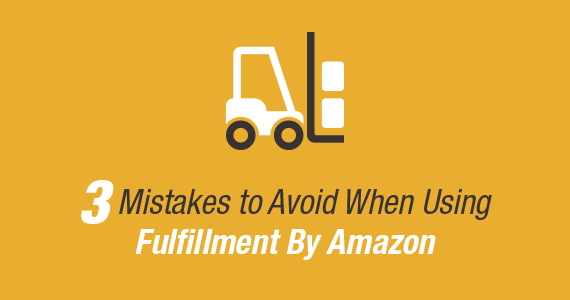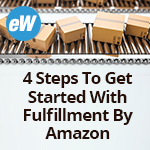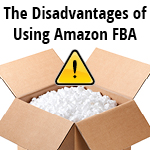 “You sell it; we ship it,” touts Amazon.com on its Fulfillment by Amazon (FBA) information page. What exactly does this mean? In a nutshell, the service allows sellers like you to store your products in Amazon’s fulfillment centers, and when you make a sale, Amazon handles shipping, handling and customer service – not you.
“You sell it; we ship it,” touts Amazon.com on its Fulfillment by Amazon (FBA) information page. What exactly does this mean? In a nutshell, the service allows sellers like you to store your products in Amazon’s fulfillment centers, and when you make a sale, Amazon handles shipping, handling and customer service – not you.
FBA can help you grow your sales, and it allows you to put your time and focus on matters other than order fulfillment. However, to make the best use of the service and see optimal results, you’ll want to make sure you aren’t making these common mistakes:
Mistake 1: Neglecting to update the price when you change your listings from merchant-fulfilled to FBA. Unlike merchant-fulfilled listings, which include list price and a shipping credit, FBA items require just a list price, since shipping is free to the buyer – but in almost all cases, that list price should be higher than your original merchant-fulfilled list price. For example, if you’re selling a vintage postcard for $1.50 and as merchant-fulfilled listing you specified $2.99 for shipping, by not updating the price in an FBA listing to reflect free shipping, you just ate not only the original shipping costs, but also Amazon’s other listing commissions. It’s an easy mistake to make … but it’s just as easy to double-check for this situation to avoid losing money, especially if your shop includes inexpensive items as in the example above.
Mistake 2: Confusing commingled and distributed inventory placement services. Don’t let the wordy terms scare you; they refer to the different ways in which Amazon labels its inventory from its own stock as well as from individual sellers. Overall, Amazon’s inventory placement service allows you to ship your standard-size products to a single warehouse; if you sell oversize items, they go to another single warehouse. For this option, you pay a fee per item depending on weight, and Amazon further distributes the products to other warehouses. Distributed inventory placement – Amazon’s default option for sellers – means you personally ship to multiple warehouses. Since you handle the product movement with this option, it does require a little more time and effort on your part, however; you don’t pay a fee for each item. Finally, sellers may opt for commingled inventory, which means your products will be stored along with identical products from Amazon and other sellers. For example, if you’re selling a teapot of a certain style/size and by a specific manufacturer, your teapot will be stored with other teapots of exactly those characteristics, and Amazon will draw from this overall collection to fulfill orders. It’s the least expensive of the choices, but go in with the knowledge that you will lose some control over the condition and quality of products you sell. There are pros and cons to each choice outside of fees – you just want to make sure you’ve read the fine print so there are no surprises with either fees or fulfillment.
Mistake 3: Getting sloppy about quality control of your products. If you’re on a selling roll, you may find yourself rushing to obtain more products to list. Never skimp on thoroughly examining your items! If you just glance at them, or rely on scanning the barcode with your phone without personally verifying the contents before sending them to Amazon to store and ship, you may miss problems in packaging, overall condition – even items missing from the box entirely! If this happens to you – and you don’t have a backup product to make it right – your buyers and Amazon will lose faith in your shop.
The Bottom Line
Make the most of Amazon FBA by optimizing its features and, at the same time, maintaining the integrity of your individual store. Visit Amazon.com to learn more about FBA and determine whether it’s a good choice for your business.






